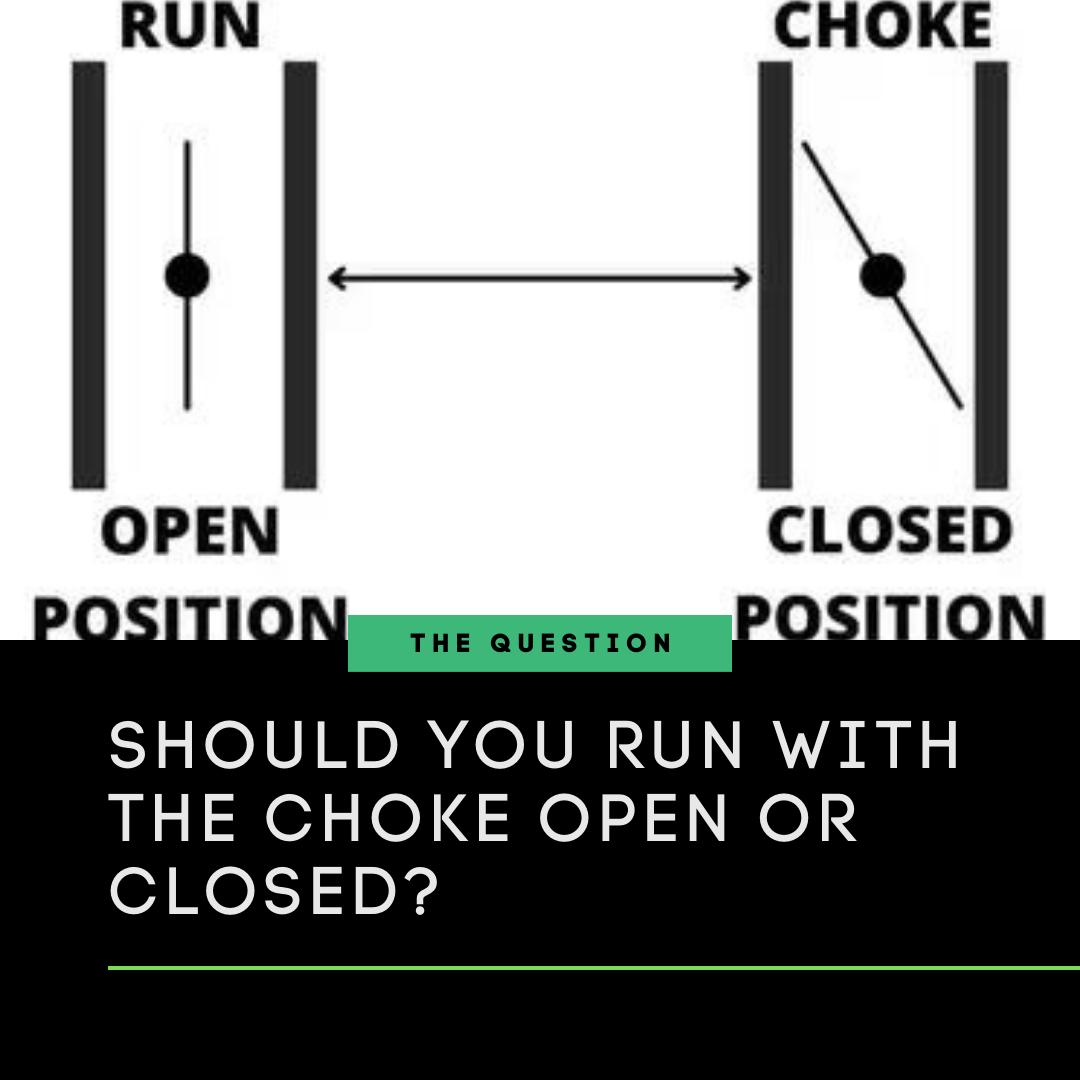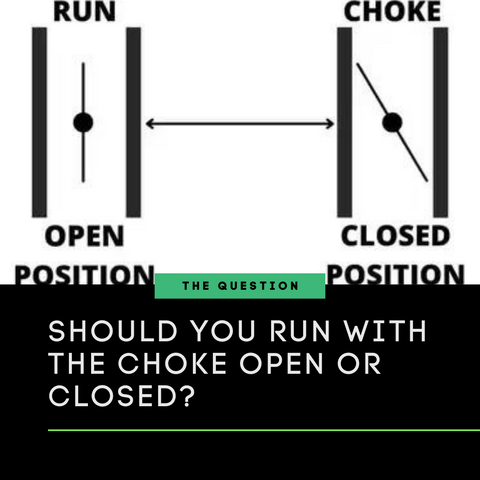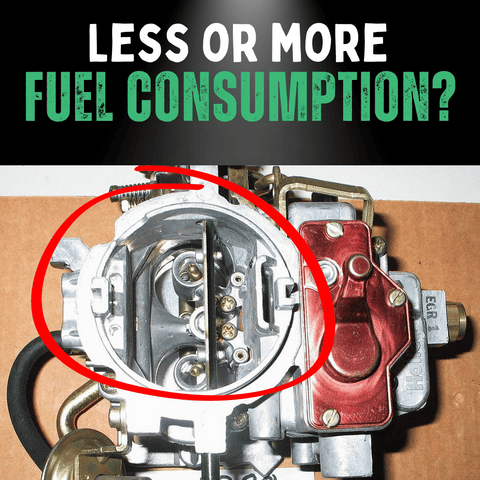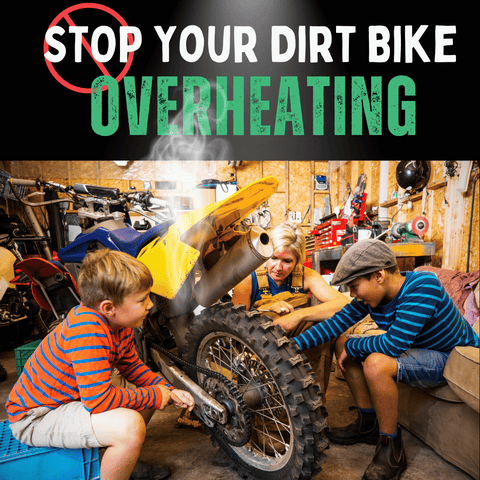
Should You Run With The Choke Open Or Closed?
We all want our engines to perform at their best, right?
But have you ever pondered this - should you run with the choke open or closed?
It turns out the answer lies in whether your engine is warm or cold.
A deeper understanding of this concept will help avoid common problems such as when dirt pit bike only runs with the choke on.
The Role of the Choke
Cold Engine
When dealing with a cold engine, the choke's role becomes paramount.
Picture this: it's a cold morning, and your engine is yet to warm up. It's at this crucial juncture that your choke comes into play.
But how exactly?
Let's take a look.
How the Choke Works
The choke, aptly named, works in a somewhat constraining manner. It effectively "strangles" or restricts the air supply to the engine. 
Think of it as a door, the opening and closing of which controls the amount of air that can enter.
This door closes when the engine is cold, limiting the air supply.
But why restrict air, you might ask?
The answer lies in the delicate balance between fuel and air required for optimal combustion.
Optimal Fuel Ratio
An engine needs a specific fuel-to-air ratio to start efficiently in cold conditions.
Specifically, it requires a richer fuel mixture, meaning it needs more fuel and less air. Now, how can you accomplish that?
That's where our "door" (the choke) comes into play.
The choke enriches the fuel mixture by restricting the amount of air that goes into the engine.
This is akin to wrapping a cosy blanket around a person feeling chilly.
Just as the blanket keeps the cold air out and helps the person retain body heat, the choke, when closed, helps the engine maintain a richer fuel mixture by keeping excess air out.
This perfect proportion of fuel to air, enabled by the choke, allows the cold engine to start efficiently and smoothly.
After all, the engine, like our bodies, needs the right balance to function properly.
As the engine gradually warms up, it requires less fuel and more air, leading us to adjust the choke accordingly, but that's a story for another section.
For now, remember, a closed choke is to a cold engine what a warm blanket is to a chilly person – absolutely essential!
Related: Smooth Carburetor Running: Solving the Choke Mystery
Warm Engine
As your engine warms up, the choke's role undergoes a transformation.
This metamorphosis is akin to the change of seasons, moving from chilly winter mornings to the bright, sunny afternoons.
Just as one gradually sheds layers of clothing as the day warms up, similarly, the engine needs a gradual adjustment of the choke.
Related: How To Use The Choke On Your New Bike (WITH STEPS)
Choke Adjustment
When your engine starts to warm up, the choke must be progressively opened.
Think of it as gently unwrapping the blanket of a person who's been lying in the sun.
As the sun's rays gradually warm their body, they no longer need the blanket to stay warm.
Similarly, as your engine heats up, it requires more air and less fuel for optimal performance.
The choke, once fully closed to limit the air supply, must now be gradually opened to increase the air supply.
This process isn't abrupt but rather a smooth, slow transition akin to the gradual shift from dawn to dusk.
Optimal Air Supply
A warm engine has different requirements than a cold one. As it heats up, it needs more air.
Why, you ask?
As the temperature rises, the engine's demand for air increases to maintain the right fuel-to-air ratio for efficient combustion.
Imagine a runner who's started to pick up the pace. As they increase their speed, their body demands more oxygen, and they breathe heavier and faster.
Similarly, a warm engine needs a higher air supply to function at its peak, which means the choke must be fully open.
Just as the runner can't speed up while holding their breath, the engine can't run efficiently with a restricted air supply.
Thus, when the engine is warm, the choke must be fully open to allow ample air to mix with the fuel.
Remember, a well-oxygenated engine is a happy and efficient engine!
Consequences of Incorrect Choke Usage
Just as there are consequences for not following a recipe correctly, there are consequences for not using the choke in the right manner. And just like in cooking, some mistakes can be more costly than others.
Limited Air Supply
If you leave the choke closed while the engine is running, you're essentially limiting the air supply to your engine. It's like trying to breathe with a scarf tightly wound around your nose and mouth.
As you can imagine, that wouldn't be very comfortable, and neither is it for your engine.
Impact on Fuel Mixture
With limited airflow, the engine starts running "rich", meaning the fuel-to-air ratio is skewed towards too much fuel.
This can result in your engine stalling, similar to how trying to bake a cake with an excess of flour and a shortage of eggs would be a recipe for disaster.
Your cake wouldn't rise properly, and your engine won't run smoothly either.
Carburettor Problems
Just like a body reacts when something isn't right, your engine also gives you signals when there's trouble.
If the engine can run with the choke closed but falters when the choke is opened, it's like a distress signal indicating possible carburettor issues.
Fuel Passage Blockages
This symptom may point towards debris partially clogging the fuel passages in the carburettor.
Think of it like a river flowing freely until a fallen log obstructs its path.
The water still flows, but its pathway is restricted, and it struggles to make its way past the obstruction.
Similarly, if debris is impeding the free flow of fuel within the carburettor, your engine will struggle to function correctly, leading to performance issues.
For more in-depth insights into this issue, you can check out our comprehensive guide on ride-on toy maintenance.
Just as we must clear the fallen log from the river to restore its flow, the debris must be removed from the carburettor to ensure your engine runs smoothly.
Related: Does Leaving The Choke Closed Increase Fuel Consumption?
Overheating
Just like running a marathon in a heavy winter coat can lead to overheating, running your engine with the choke continually closed can lead to similar consequences.
Overheating is a critical issue that you may face if the choke is misused.
Effects of a Rich Fuel Mixture
As mentioned earlier, a closed choke causes a rich fuel mixture. But why does that lead to overheating?
Well, it's all about balance.
When there is more fuel and less air, combustion within the engine is less efficient and generates more heat.
This excess heat can cause the engine to run hotter than usual. Imagine wearing your heaviest winter coat on a sunny summer day.
It would be uncomfortable, and your body would start to overheat because it can't cool itself efficiently.
Similarly, an engine running too rich cannot cool itself effectively, leading to potential overheating.
This scenario illustrates the vital importance of maintaining a balanced fuel-to-air ratio in your engine and the choke's pivotal role in this.
So, use your choke wisely, just as you would choose your outfit according to the weather, and keep your engine from turning into a hot mess!
Related: PROVEN Ways to STOP Your Dirt Bike From Overheating
In Summary
So, should you run with the choke open or closed?
When starting a cold engine, the choke should be closed and gradually opened as the engine warms up.
Once the engine is warmed up, the choke should be fully open. Remember, using the choke correctly is crucial to keep your engine running smoothly, just as using the right ingredients in the right proportion is vital for a delicious cake.
Running an engine is not just a mechanical task but a delicate art of maintaining balance.
For more guides on running your engine smoothly, visit our RiiRoo Ride-on Toy Guides.
Keep that choke in check, and your engine will thank you! And in case you need any spare parts, check out our collection at RiiRoo Ride-on Spare Parts.
Explore RiiRoo's Exciting Petrol Powered Rides!
If you found this guide insightful, you'll be thrilled to know that RiiRoo doesn't just offer knowledge and guidance, we also bring the thrill and joy of real motorised rides to your doorstep.
We invite you to explore our fantastic range of petrol motorbikes, quad bikes, and petrol go karts.
Our petrol-powered ride-on toys are built to offer an authentic driving experience, providing endless fun for your little adventurers.
They are robust, safe, and designed to keep up with the energy and enthusiasm of your child.
And, for a stress-free experience, we offer an assembly service as an optional extra.
Our team of experts can assemble your chosen ride-on toy to perfection, so your child can start their adventures as soon as it arrives!
FAQs
What happens if you forget to turn off the choke after starting the engine?
If you forget to turn off the choke after starting the engine, it will continue to run rich, meaning there will be more fuel and less air. This can result in the engine operating inefficiently, consuming more fuel than necessary, producing excessive exhaust emissions, and even causing the spark plugs to foul. Therefore, it's crucial to remember to open the choke as the engine warms up gradually. For more on this, read our guide on what happens if an air filter gets wet.
Can a faulty choke impact the engine's fuel consumption?
Absolutely. If a choke is faulty and stays closed or partially closed even when the engine is warm, it will cause a rich fuel mixture (more fuel, less air). This can lead to an increase in fuel consumption as the engine will burn more fuel than necessary for its operations. Consequently, a faulty choke can lead to higher running costs due to increased fuel consumption.
How do I know if my choke is working properly?
There are a few signs to look out for. If your engine struggles to start or run smoothly in cold conditions, it could indicate a choke that's not closing properly. Conversely, if your engine runs smoothly when cold but starts to run poorly (like stalling or running rough) as it warms up, this might indicate a choke that's not opening properly. In both cases, a professional inspection might be necessary to confirm the issue and address it.




